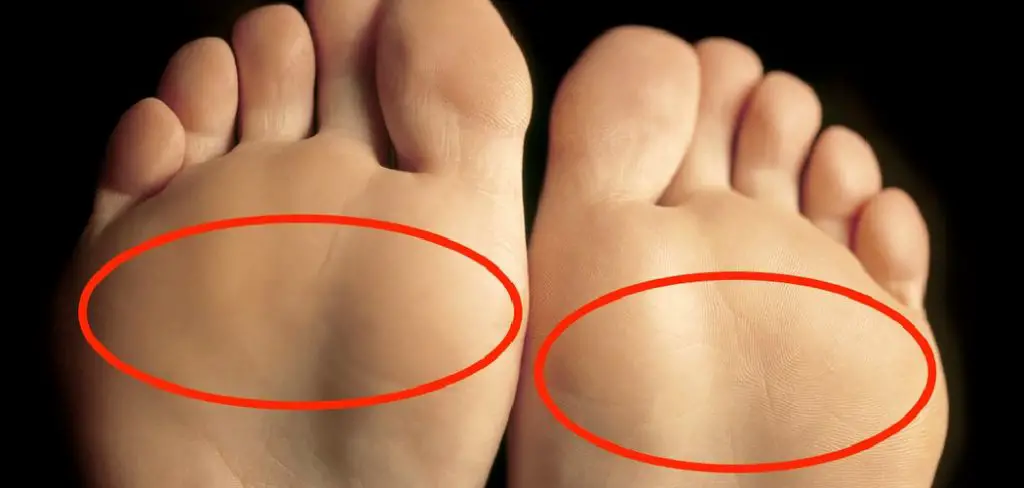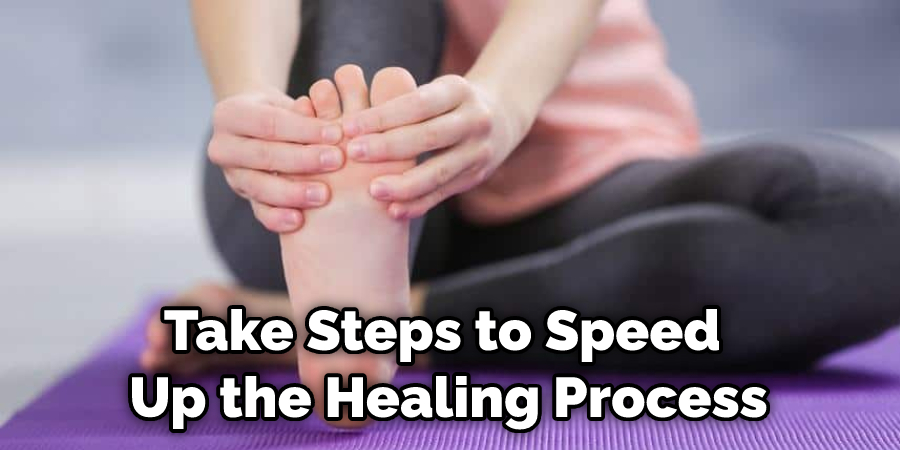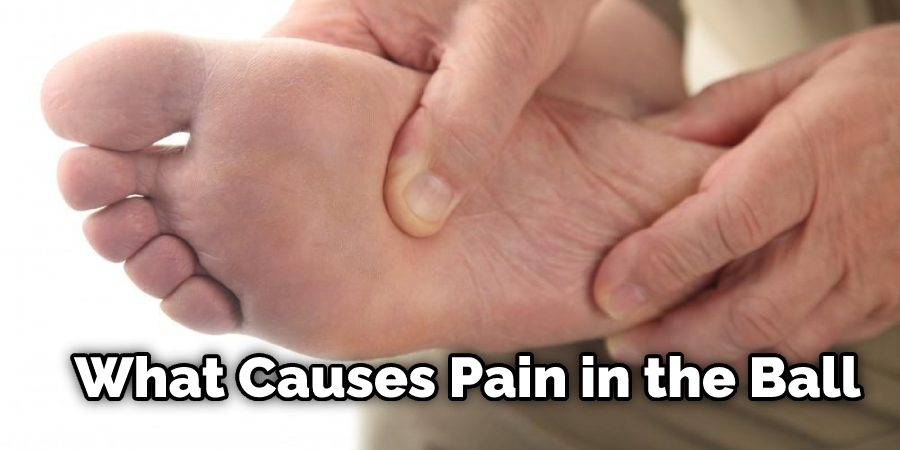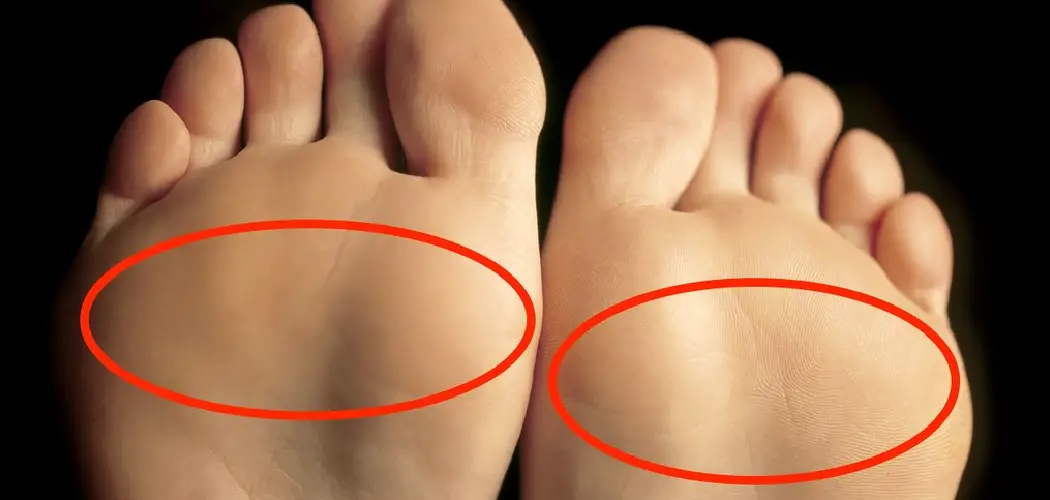Metatarsalgia is an inflammation of the metatarsal bones in the foot. It is a common condition that can cause pain in the ball of your foot. The good news is that it usually goes away within a few months. However, there are some things you can do to speed up the healing process and reduce your symptoms. In this article, we will discuss how long does it take for metatarsalgia to go away. We will also give you some tips for preventing it from happening again. Read on to learn more!

Why Cause Metatarsalgia?
There are a few reasons why you might develop metatarsalgia. One common cause is wearing shoes that are too tight or uncomfortable. This can put pressure on the metatarsal bones and cause inflammation. Other causes of metatarsalgia include:
-Overuse or injury of the foot
-Arthritis
-Metabolic disorders, such as diabetes
-Nerve damage in the foot
If you are experiencing pain in the ball of your foot, it is important to see a doctor to determine the cause. In some cases, surgery may be necessary to correct the underlying problem.
Metatarsalgia Risk Factors:
A few risk factors can increase your chances of developing metatarsalgia. These include:
– Having high arches or flat feet
– Obesity or being overweight
– Wearing shoes that are too tight or have high heels
– Activities that involve a lot of jumping or running
-Wearing shoes that are too tight or too loose
-Excessive running or jumping
-Pregnancy
-Age (metatarsalgia is more common in older adults)
Could It Be With Me?
You may be experiencing metatarsalgia if you are experiencing pain in the ball of your foot. A few risk factors can increase your chances of developing the condition, including high arches or flat feet, obesity or being overweight, wearing shoes that are too tight or have high heels, and activities that involve a lot of jumping or running. If you are experiencing any of these symptoms, it is best to visit your doctor for a diagnosis.

There Are Some Reasons Why It Could Be With You:
Existing Foot Conditions:
If you have any existing foot conditions, such as flat feet, high arches, or Morton’s neuroma, your risk for metatarsalgia increases.
Injury:
If you’ve previously injured your foot, ankle, or leg, that area is more susceptible to developing metatarsalgia.

Poor Footwear:
Wearing the wrong type of shoes can also put you at a higher risk of developing metatarsalgia. For example, shoes that are too tight or have high heels can cause excessive pressure on the ball of your foot.
Lifestyle Habits:
Your lifestyle habits can also play a role in your risk of developing metatarsalgia. For example, activities that involve a lot of jumping or running, like basketball or running, can increase your chances of developing the condition. And if you’re pregnant, your risk goes up even more.
Age:
Metatarsalgia is more common in older adults. As we age, our bones and muscles tend to weaken, making us more susceptible to developing this condition.
Symptoms of Metatarsalgia:
Metatarsalgia is a condition that affects the metatarsal bones in the foot. These bones are responsible for supporting the weight of the body. Symptoms of metatarsalgia can include pain in the ball of the foot, pain that radiates to the toes, numbness or tingling in the toes, and calluses or corns on the ball of the foot.
The pain associated with metatarsalgia can make it difficult to walk, stand, or exercise. It is important to see a doctor if you are experiencing these symptoms, as there are treatments available that can help lessen the pain.
Quick Tips to Recover Faster from Metatarsalgia
Step 1: Choose the Right Footwear:
One of the best ways to speed up your recovery from metatarsalgia is to choose supportive and comfortable footwear. Shoes too tight or restrictive can aggravate the condition, so it’s important to find a pair that fits well and doesn’t rub against your feet. Look for shoes with good arch support and cushioning in the ball of the foot.
Step 2: Ice It:
Another way to reduce inflammation and pain is by icing the affected area. You can use a cold pack, or if you don’t have one available, you can put ice in a plastic bag and wrap it in a towel. Apply the ice for 10-15 minutes, 3-4 times a day. This will help to numb the pain and reduce swelling. You can also try using a frozen water bottle to roll your foot over, giving yourself a massage in the process.
Step 3: Elevate Your Foot:
If you are experiencing pain in your foot, it is best to elevate it. By elevating your foot, you can reduce swelling and discomfort. You can do this by propping your foot up on a pillow or using an ice pack. Try to keep your foot elevated for 20-30 minutes, a few times a day. The key is to make sure your foot is above your heart.

Step 4: Take Pain Relievers:
If the pain is severe, you may need to take pain relievers. In addition, over-the-counter medications such as Ibuprofen or acetaminophen can help to reduce the pain. Talk to your doctor if the pain does not improve with over-the-counter medications. They may prescribe a stronger pain reliever or other treatment options. You can also try using topical pain relievers, such as creams or ointments, to target the affected area.
Step 5: Wear Shoes That Fit Properly:
Wearing shoes that fit properly is important for preventing metatarsalgia from returning. Ensure that your shoes have good arch support and are not too tight or too loose. You can also try using insoles or orthotics for added support and cushioning. You may also want to switch up your footwear choices and opt for more comfortable and supportive shoes, especially if you participate in activities that put a lot of pressure on the ball of your foot.
Step 6: Stretch it Out:
Stretching your feet can also help to prevent metatarsalgia from returning. There are a few different stretches that you can do. One stretch involves placing your foot flat on the ground and bending your toes back towards your heel. You can also try pulling your toes up towards your shins. If you have difficulty doing these stretches, ask a physical therapist for help.
Step 7: Massage it Out:
Massaging your feet can also help to reduce pain and swelling. You can use a foam roller or a tennis ball to massage the bottom of your foot. Be gentle when massaging, as you do not want to aggravate the condition. If you are unsure how to properly massage your feet, seek the help of a physical therapist or massage therapist.

Step 8:Take Ibuprofen:
If the discomfort is still too much to handle, taking Ibuprofen can help to reduce inflammation and pain. Just be sure not to take more than the recommended dosage and to speak with a doctor before taking any medication. Chronic pain should always be addressed by a medical professional. It is important to follow the proper steps and treatments in order to fully recover from metatarsalgia.
Step 9: Take a Break:
If your metatarsalgia is severe, take a break from your normal routine. Resting can help to reduce inflammation and pain. Try to stay off your feet as much as possible, and ice the area regularly. You may also want to consider using a cane or crutches to take weight off of your foot while it heals. it is important not to push yourself too hard during recovery, as it could worsen the condition and prolong healing time. Listen to your body and take breaks when needed.
Step 10: Seek Medical Treatment:
If your metatarsalgia does not improve with self-treatment, you may need to see a doctor. Several treatments can help reduce the symptoms of metatarsalgia, including:
– Physical therapy
– Orthotics
– Surgery

If you are experiencing severe pain and discomfort, seek medical attention right away. Early treatment is key to preventing long-term damage to the foot.
Metatarsalgia can be a frustrating condition to live with, but there are several steps that you can take to help reduce the symptoms. Follow these simple tips, and you should start to feel better in no time. If you want to know more about how long does it take for metatarsalgia to go away, keep reading.
Consult With Your Doctor or Podiatrist.
If you are experiencing pain in your feet, it is important to consult with your doctor or podiatrist to get a proper diagnosis and treatment plan. Metatarsalgia can take time to go away, and there may be a range of treatments available to help ease your symptoms.
Depending on the severity of your condition, you may need to wear special shoes or inserts, take medication, or undergo physical therapy. However, by working closely with a healthcare professional, you can get on the path to relief and start enjoying life without foot pain.
Metatarsalgia Diagnosis:
Metatarsalgia is a condition that a podiatrist generally diagnoses. The podiatrist will look at your feet and assess how you walk, how much pain you are in, and how swollen your feet are. It is usually caused by an overuse injury, such as running or dancing, or due to wearing too-tight shoes or not fitting well. The most common symptoms of metatarsalgia are pain and inflammation in the ball of your foot. You may also experience numbness or tingling in your toes.
If you are experiencing these symptoms, see a doctor for a diagnosis. Your doctor will likely examine your foot and ask how long you have been experiencing the symptoms. They may also test how much weight you can comfortably bear on your foot.
Metatarsalgia Treatment:
Metatarsalgia is a foot condition characterized by pain and inflammation in the ball of the foot. It can be caused by several things, such as wearing high heels, obesity, or even stress. If you are suffering from metatarsalgia, you may be wondering how long it will take for the condition to go away. Unfortunately, there is no one-size-fits-all answer to that question. The amount of time it takes for metatarsalgia to heal depends on various factors, including the underlying cause of the condition and how well you adhere to your treatment plan.
That said, you can do a few things to speed up the healing process. First, make sure to rest your foot as much as possible. Second, ice the affected area for fifteen minutes several times a day. Third, take over-the-counter pain medications as needed. Finally, wear supportive shoes and orthotics when you can walk. If you follow these tips and stick to your treatment plan, you should see a noticeable improvement in your symptoms within a few weeks. However, it may take several months for the condition to disappear completely.

If you are struggling to manage your metatarsalgia symptoms on your own, be sure to consult with a podiatrist. They can create a personalized treatment plan specifically for you and help you get back to feeling like your old self again. For more tips on how long does it take for metatarsalgia to go away, keep reading!
Metatarsalgia Complications:
Metatarsalgia can be a very painful condition, and in some cases, the pain may persist even after the condition has gone away. This is especially true if there are any complications associated with metatarsalgia. Some of the most common complications include:
Recurrence of the condition:
In some cases, metatarsalgia may recur after going away. This can be due to various factors, such as continued stress on the feet or an underlying medical condition that contributed to the development of metatarsalgia in the first place.
Persistent pain:
In some cases, the pain associated with metatarsalgia may persist long after the condition has gone away. This can be a challenge to deal with and can significantly impact the quality of life.
Infection:
In some cases, an infection may develop as a result of metatarsalgia. This can be a serious complication and may require treatment with antibiotics or surgery.
Amputation:
In the most extreme cases, metatarsalgia may lead to the need for amputation of the foot. This is a rare complication, but it does occur in some cases.
It is important to be aware of these potential complications if you are suffering from metatarsalgia and to seek medical attention if they occur. Your doctor can help you manage any complications that may arise and help you recover from metatarsalgia.
Metatarsalgia Outlook:
Metatarsalgia is a condition that results in pain in the ball of your foot. It can be caused by several things, including wearing shoes that are too tight or too loose or dancing or running on hard surfaces.

The good news is that metatarsalgia usually goes away within a few weeks. However, it can persist for months or even years in some cases. If you have metatarsalgia and it’s not going away, see your doctor to find out what might be causing the pain and how to best treat it.
Metatarsalgia Re-injury Prevention:
You can do a few things to help prevent metatarsalgia from coming back. First, wear shoes that fit properly and are made for the activity you’re doing. For example, if you’re a runner, make sure your shoes have good cushioning. If you dance, choose shoes that have a hard sole and are designed for dancing.
Second, take a break from the activities that cause your pain. For example, if you’re a runner, try taking a break every other day. If you dance, take a break every other week. Finally, stretch your feet and ankles regularly. This will help keep your muscles and tendons strong and flexible.
When Would You Need Surgery?
Most people with metatarsalgia do not require surgery. However, if conservative treatment fails to relieve pain, your doctor may consider surgery. Conservative treatment includes rest, ice, the elevation of the foot, wearing shoes that fit well and are comfortable, avoiding high heels, and using over-the-counter medications such as Ibuprofen or acetaminophen.
If these measures do not help, custom orthotics may be prescribed. In addition, surgery may be recommended in sporadic cases when the metatarsal head is deformed or the pain is too severe. This usually involves removing part of the bone or changing its position of the bone.
How Long Does It Take for Metatarsalgia to Go Away?
Metatarsalgia is a condition that affects the foot and, specifically, the metatarsal region. The cause of metatarsalgia is typically unknown, but it is thought to be due to various factors such as overuse, injuries, or arthritis. Symptoms of metatarsalgia can include pain in the ball of the foot, inflammation, numbness, and tingling.
If you are suffering from metatarsalgia, you may be wondering how long it will take for the condition to go away. Unfortunately, there is no definitive answer to this question. The amount of time it takes for metatarsalgia to resolve can vary depending on the cause and severity of the condition.
Frequently Asked Question
How Long Does It Take To Recover After Surgery?
The length of time it takes to recover after surgery varies depending on the performed surgery. Generally, more extensive surgeries require more time to recover.
Most people can return to normal activities within a few weeks after surgery. Still, it is important to follow the post-operative instructions closely to ensure a full and speedy recovery. Please keep reading for more information about how long does it take for metatarsalgia to go away.
When Should You Call for Help?
You should call for help if you experience any of the following symptoms after surgery:
– Severe pain
– Fever
– Bleeding that does not stop
– Swelling that does not go down
– Redness or drainage from the incision
Does Metatarsalgia Ever Go Away?
There is no one-size-fits-all answer to this question, as the course of metatarsalgia varies from person to person. In some cases, the condition may go away after some time. However, it may become a chronic condition that requires ongoing treatment in other cases.
Should You See a Doctor for Metatarsalgia?
Metatarsalgia is a foot condition that results in pain in the ball of your foot. The pain is often caused by an inflammation of the tissues that cushion the bones in your feet. You may be able to treat metatarsalgia at home by taking over-the-counter medication and using ice packs. However, you should see a doctor if the pain persists or worsens.
What Causes Pain in the Ball of Your Foot After Running?
Problem: Running is a great way to stay in shape, but how do you know if it’s hurting your feet?

Agitate: There are many ways that running can cause pain on the outside edge of your foot. It could be from an injury or overuse.
Solution: The best thing to do is get a diagnosis from a podiatrist who specializes in sports injuries and find out how long it takes. They will also be able to tell you how much time off you need before resuming running again.
What Are the Most Common Treatments for Metatarsalgia?
There is no one-size-fits-all answer to how long it takes for metatarsalgia to go away. The most common treatments for metatarsalgia usually involve some combination of rest, ice, and over-the-counter pain relief medication. In more severe cases, surgery may be recommended. Talk to your doctor about the best treatment plan for you.
Conclusion Paragraph:
If you are suffering from metatarsalgia, there is hope. The condition usually goes away within a few months. However, if your pain persists or worsens, be sure to see a doctor for further evaluation and treatment. Thanks for reading our post about how long does it take for metatarsalgia to go away. We hope you found the information helpful and informative. Remember to take care of your feet, wear proper shoes, and listen to your body to prevent re-injury. Wishing you a speedy recovery!
You Can check it Out to When to Replace Climbing Shoes

